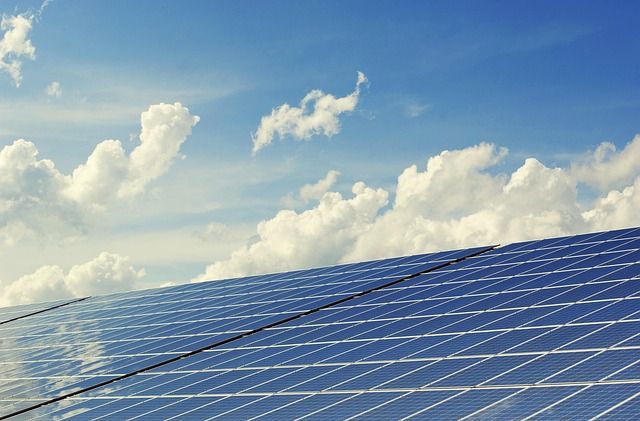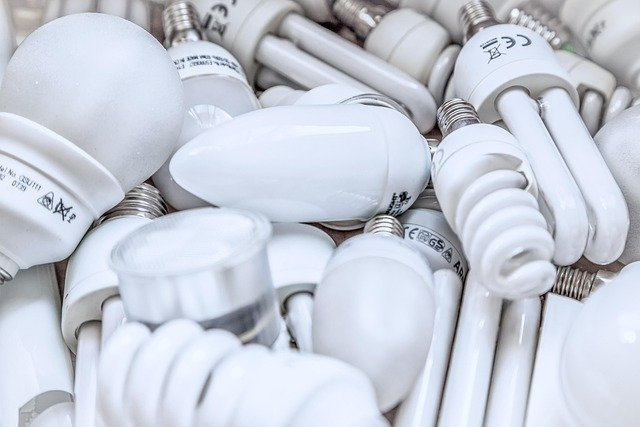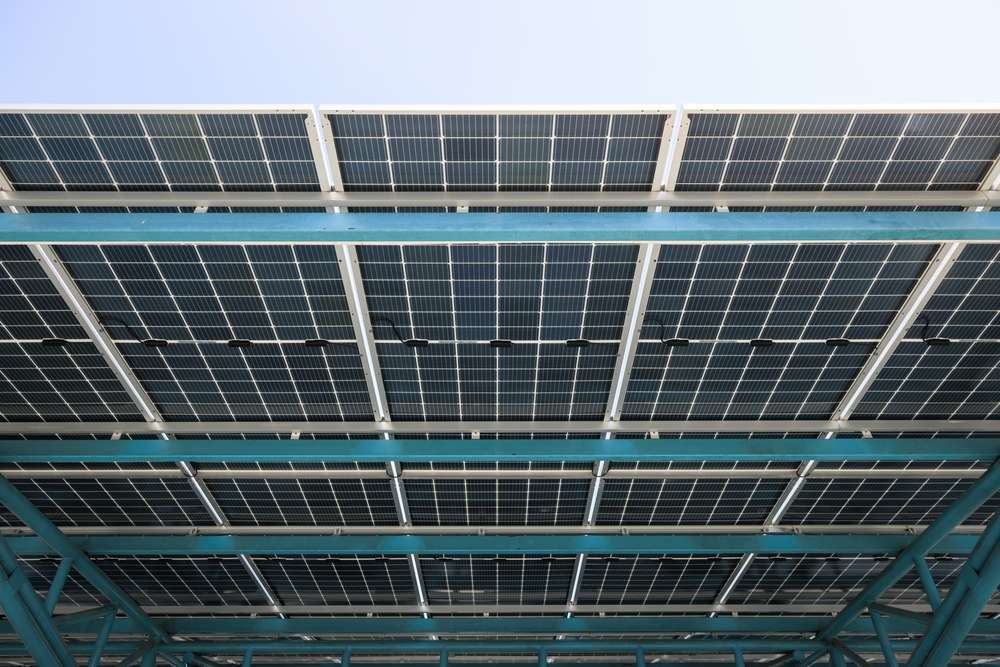Green Energy 101: What You Should Know About Renewable Power
Renewable power is transforming how we generate electricity and fuel our economies. As concerns about climate change and environmental degradation intensify, understanding the fundamentals of green energy becomes essential for everyone. This guide explores the core principles of renewable power, its environmental benefits, and its growing role in shaping a sustainable future for communities worldwide.

The global energy landscape is undergoing a profound transformation. Fossil fuels, which have powered industrial growth for over a century, are being challenged by cleaner, more sustainable alternatives. Green energy encompasses power generated from renewable sources such as solar, wind, hydroelectric, geothermal, and biomass. Unlike conventional energy sources that deplete finite resources and release harmful emissions, renewable power harnesses natural processes that continuously replenish themselves.
The shift toward green energy is not merely an environmental preference but an urgent necessity. As nations commit to reducing greenhouse gas emissions and limiting global temperature rise, renewable power has emerged as the cornerstone of climate action strategies. Understanding how these technologies work and why they matter helps individuals and communities make informed decisions about their energy consumption and support policies that accelerate the transition to a cleaner energy future.
How Green Energy Helps Reduce Carbon Emissions and Combat Climate Change
Carbon dioxide and other greenhouse gases trap heat in the atmosphere, driving global warming and its associated consequences. Fossil fuel combustion for electricity generation, transportation, and industrial processes accounts for the majority of these emissions. Green energy sources produce little to no direct carbon emissions during operation, making them critical tools in the fight against climate change.
Solar panels convert sunlight into electricity without burning fuel or releasing pollutants. Wind turbines harness kinetic energy from air currents, generating power with zero emissions. Hydroelectric facilities use flowing water to turn turbines, while geothermal systems tap into the Earth’s internal heat. Each of these technologies displaces the need for coal, oil, or natural gas, directly reducing the carbon footprint of energy production.
Studies consistently demonstrate that widespread adoption of renewable energy significantly lowers national and regional emissions. Countries that have invested heavily in wind and solar infrastructure have seen measurable declines in their carbon intensity, proving that green energy is not just a theoretical solution but a practical pathway to meeting climate targets.
Why Renewable Energy Is Key to a Sustainable Future
Sustainability requires meeting present energy needs without compromising the ability of future generations to meet theirs. Fossil fuels are inherently unsustainable because they exist in limited quantities and cause environmental damage during extraction, processing, and combustion. Renewable energy, by contrast, relies on sources that naturally regenerate, ensuring long-term availability.
Beyond resource availability, green energy systems promote environmental health. They reduce air and water pollution, minimize habitat destruction, and decrease the risk of catastrophic events like oil spills or nuclear accidents. Communities powered by renewable energy enjoy cleaner air, which translates to better public health outcomes and lower healthcare costs.
The scalability of renewable technologies also supports sustainability. Solar panels can be installed on individual homes or deployed in massive solar farms. Wind turbines function effectively in diverse geographical settings, from offshore platforms to rural plains. This flexibility allows energy systems to be tailored to local conditions and needs, fostering resilience and energy independence.
How Renewable Power Reduces Dependence on Fossil Fuels
Energy security has long been a concern for nations that rely on imported oil, coal, or natural gas. Price volatility, geopolitical tensions, and supply disruptions create economic instability and vulnerability. Renewable energy offers a pathway to greater energy independence by utilizing domestically available resources.
Solar radiation, wind currents, and water flows are abundant and distributed across the globe. By investing in infrastructure to capture these resources, countries can reduce their reliance on imported fuels and insulate themselves from international market fluctuations. This shift not only enhances national security but also stabilizes energy costs for consumers and businesses.
The transition away from fossil fuels also diminishes the environmental and social costs associated with extraction industries. Coal mining, oil drilling, and natural gas fracking often lead to land degradation, water contamination, and displacement of communities. Renewable energy projects, while not without environmental considerations, generally have smaller ecological footprints and can coexist more harmoniously with natural ecosystems.
The Economic Impact of Switching to Green Energy Systems
Transitioning to renewable energy requires significant upfront investment in infrastructure, technology, and workforce training. However, the long-term economic benefits far outweigh these initial costs. Green energy systems reduce fuel expenses, as sunlight and wind are free once the infrastructure is in place. Maintenance costs for renewable installations are typically lower than for fossil fuel plants, which require continuous fuel supply and more frequent repairs.
Renewable energy also stabilizes electricity prices. Fossil fuel markets are subject to unpredictable price swings driven by geopolitical events, natural disasters, and supply-demand imbalances. Green energy, with its predictable operational costs, provides a hedge against these uncertainties, benefiting both consumers and businesses.
The economic ripple effects extend beyond energy bills. Regions that invest in renewable energy attract green technology companies, research institutions, and skilled workers. Property values in areas with clean energy infrastructure often increase, and local governments benefit from expanded tax bases. These economic advantages make the transition to green energy not only environmentally responsible but financially prudent.
How Green Energy Creates Jobs and Drives Innovation
The renewable energy sector is one of the fastest-growing employment sectors globally. Manufacturing, installing, and maintaining solar panels, wind turbines, and other green technologies require a diverse workforce with skills ranging from engineering and project management to skilled trades and technical support. As demand for renewable energy expands, so does the need for trained professionals.
Job creation in the green energy sector tends to be more distributed geographically than traditional fossil fuel industries. Solar installations can occur in urban and rural settings, while wind farms are often located in less densely populated regions, bringing economic opportunities to areas that may have been overlooked by conventional industries. This decentralization helps reduce regional economic disparities and supports community development.
Innovation is another hallmark of the renewable energy transition. Advances in battery storage, grid management, and energy efficiency continue to improve the performance and affordability of green technologies. Research and development in these areas drive technological progress, creating competitive advantages for companies and countries that lead in innovation. The intellectual property, patents, and expertise generated through this work position the renewable energy sector as a driver of future economic growth.
Conclusion
Green energy represents a fundamental shift in how humanity generates and consumes power. By reducing carbon emissions, promoting sustainability, decreasing dependence on fossil fuels, and delivering economic benefits, renewable power addresses some of the most pressing challenges of our time. The transition to green energy is not without obstacles, but the environmental, economic, and social rewards make it an essential pursuit. As technology advances and public awareness grows, renewable energy will continue to play an increasingly central role in building a cleaner, more resilient, and equitable energy future for all.




